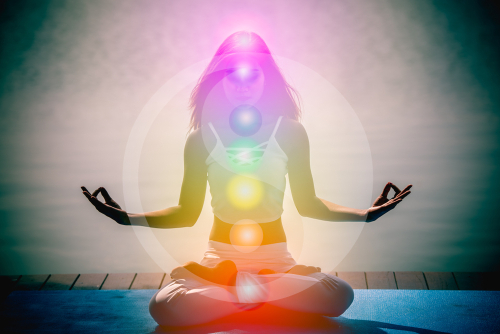Awakening the Subtle Currents Within
There’s a quiet language the body speaks—one that isn’t measured in lab tests or revealed on scans. It pulses through us in waves of intuition, tension, joy, and fatigue. This is the realm of subtle energy, the invisible yet deeply felt current that underlies our physical, emotional, and spiritual well-being.
When I began exploring energy medicine, I was navigating the aftermath of chronic stress and emotional burnout. Conventional approaches had their place, but something still felt missing. I craved a deeper connection to my body, something more intuitive and less clinical. That’s when I found practices like Reiki, chakra balancing, and other subtle energy modalities—gentle, restorative tools that work with the body’s natural rhythm instead of against it.
What Is Energy Medicine?
Energy medicine is based on the idea that the body is not only made of physical systems—organs, bones, muscles—but also energetic systems. These energetic fields, often referred to in ancient traditions as prana, qi, or life force, are believed to flow through pathways (like meridians or chakras) and influence our overall state of health.
Rather than focusing solely on symptoms, energy medicine seeks to clear blockages, restore balance, and support the body’s innate healing ability. While science is still exploring the mechanisms behind these practices, growing research into biofields and electromagnetic signaling in the body suggests there’s more happening beneath the surface than we fully understand.
Reiki: Gentle Touch, Deep Restoration
Reiki is one of the most widely known forms of energy healing. Developed in Japan in the early 20th century, Reiki involves a practitioner channeling universal life energy through their hands to the recipient, either through gentle touch or hovering just above the body.
While it may sound abstract, Reiki sessions often bring about profound calm, relief from anxiety, and even a reduction in physical discomfort. In fact, some hospitals and integrative clinics now offer Reiki as a complementary therapy to support patients undergoing surgery, chemotherapy, or trauma recovery.
The beauty of Reiki lies in its simplicity. There is no manipulation, no pressure—just presence. And sometimes, that’s exactly what the body needs: someone to be fully present, with compassionate intention, allowing space for the nervous system to soften and the spirit to rest.
Chakras: Energy Centers and Emotional Insight
Another foundational concept in energy medicine is the chakra system—a map of seven primary energy centers running along the spine, each associated with different aspects of physical, emotional, and spiritual life.
-
The root chakra relates to safety and grounding.
-
The sacral chakra governs creativity and connection.
-
The solar plexus reflects personal power and boundaries.
-
The heart chakra is the bridge of love and compassion.
-
The throat chakra expresses truth.
-
The third eye governs insight and inner vision.
-
And the crown chakra connects us to spiritual wisdom.
When one of these centers is out of balance, we may feel it as emotional unrest, recurring thought patterns, or even physical symptoms. Chakra balancing—whether through meditation, sound healing, crystals, or energy work—offers a way to listen inward and bring these centers into harmony.
Why Energy Work Matters in Holistic Healing
Modern life often fragments us. We get caught in our heads, disconnected from our bodies, and distant from our inner knowing. Energy medicine reminds us to return—to tune in instead of tuning out.
These practices don’t require belief in any one philosophy. They simply ask for openness, receptivity, and the willingness to slow down. Whether it’s a short Reiki session, a chakra meditation, or mindful breathing to move stuck energy, these tools help regulate the nervous system, release what we’ve been holding, and reconnect us to our own vitality.
And while they may seem gentle, energy practices often have deep ripple effects—improving sleep, easing anxiety, softening grief, and helping us feel more aligned with who we are beneath the noise.
Starting Your Own Exploration
You don’t need to be an expert or healer to begin working with energy. Even placing your hands on your heart and breathing deeply can be a powerful moment of reconnection.
Try exploring guided chakra meditations, attending a Reiki session, or simply lying down with calming music and setting the intention to release what no longer serves you. Trust what you feel. Your body knows the way.
Above all, energy medicine teaches us to listen—to what aches, what lights up, what asks to be released. It invites us to reclaim a relationship with the subtle, sacred forces that guide our well-being from the inside out.
Closing Thoughts
Energy medicine isn’t about fixing what’s broken—it’s about remembering your wholeness. It meets you where you are, gently guiding you back to a state of natural harmony. In a world that often asks us to push, perform, and override our inner signals, energy work offers something rare: stillness, softness, and the permission to simply be.
Your energy speaks. Your body listens. Healing begins in the quiet spaces where both can meet.



























